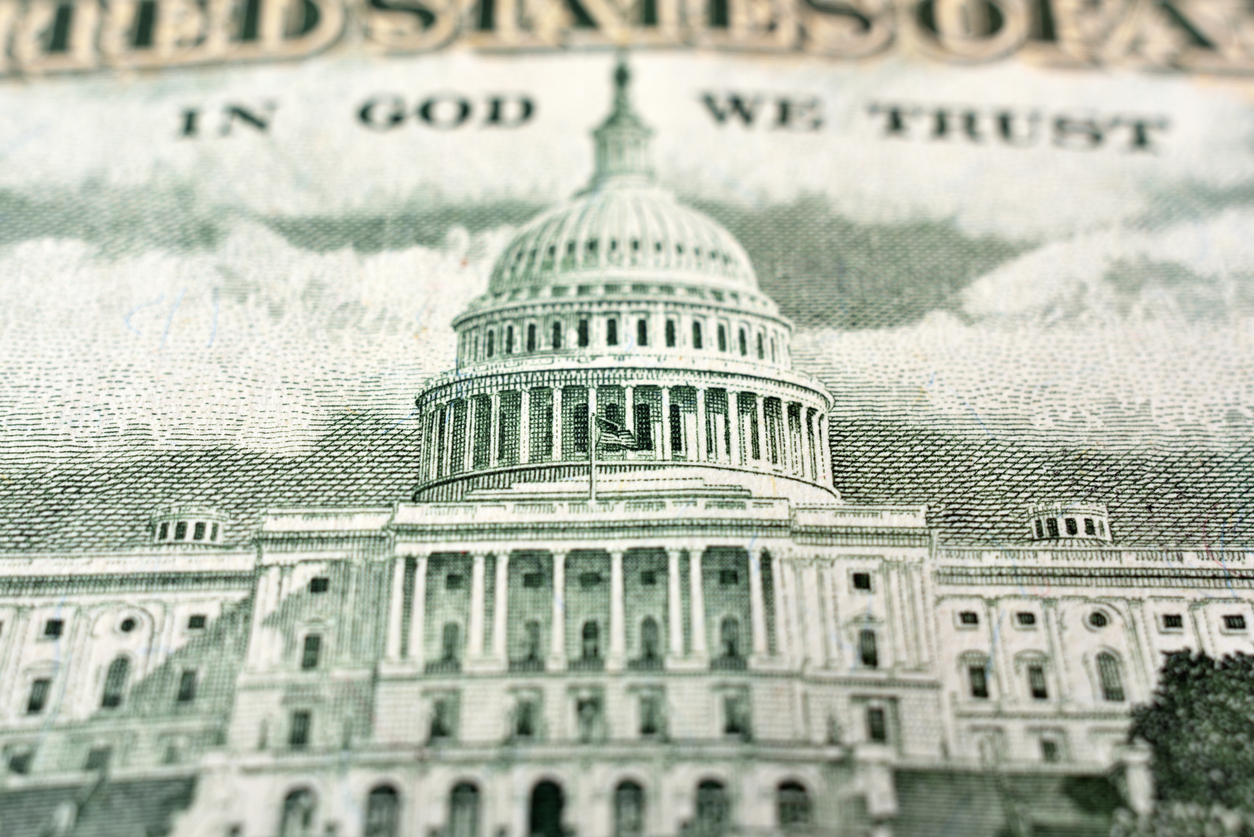
Indictments are often viewed as a death knell for a publicly traded company. As a result, whenever a government investigation involves a potential criminal penalty, obtaining a civil or administrative resolution in lieu of a criminal resolution is typically viewed as a favorable outcome for the company. Fares v. Smith[1] highlights that civil administrative actions by components of the U.S. Department of the Treasury (Treasury) can be as devastating for a company as a criminal indictment. Moreover, although an indictment at least requires a grand jury to find that probable cause exists to support criminal charges, Treasury can immediately act without an independent review, and any after-the-fact judicial review of Treasury’s determinations is severely limited.
The Fares matter stemmed from an administrative action taken by Treasury’s Office of Foreign Assets Control (OFAC) that essentially killed a global business: OFAC issued a blocking order that immediately caused the shutdown of a duty-free enterprise that earned over $600 million in revenue in 2015 and employed more than 5,000 individuals throughout Latin America.[2] Although OFAC provides a nominal path for administrative reconsideration,[3] this type of proceeding effectively shifts the burden of proof, requiring the company seeking reconsideration to provide evidence as to why it does not satisfy the criteria for the blocking that OFAC has already imposed. Such a burden requires a business entity to do the nearly impossible work of proving a negative—that it is not engaged in unlawful transactions. The challenging party in Fares did not fare well when it sought judicial review: the court not only granted substantial deference to agency determinations, but citing national security, law enforcement sensitivities, and confidentiality restrictions, also allowed OFAC to withhold substantial portions of the evidence upon which the government relied in making its determination.
The decision in Fares illustrates the challenges with successfully obtaining judicial review of an adverse finding by Treasury. Therefore, the best approach is to take all reasonable steps to avoid being in a situation where judicial review is even necessary through a robust compliance program that identifies and reviews potentially problematic transactions before they become so great that Treasury decides to take administrative action.
Background on Fares v. Smith
In Fares, the plaintiffs asserted due process violations against OFAC for freezing their assets under the Foreign Narcotics Kingpin Designation Act (Kingpin Act).[4] The Kingpin Act authorizes the president to block the U.S. assets of “foreign person[s] that play a significant role in international narcotics trafficking,” referred to as “significant foreign narcotics traffickers.”[5] The secretary of Treasury can derivatively designate foreign persons who “materially assist” or provide “financial or technological support” or “goods or services in support of the international narcotics trafficking activities of” a significant foreign narcotics trafficker.[6] The secretary can also derivatively designate foreign persons deemed to be “owned, controlled, or directed by, or acting for or on behalf of, a significant foreign narcotics trafficker,” or foreign persons who “play[] a significant role in international narcotics trafficking.”[7] Foreign persons designated under the Kingpin Act are referred to as “specially designated narcotics traffickers” (SDNTs).[8]
A designation under the Kingpin Act immediately freezes “all . . . property and interests in property within the United States, or within the possession or control of any United States person, which are owned or controlled by” the designated person.[9] There is no prior notice. A foreign person is permitted to see the unclassified, nonprivileged basis for the designation and seek administrative reconsideration only after getting designated and having all of his or her assets blocked.[10] OFAC will typically disclose a heavily redacted, unclassified administrative record, primarily consisting of news articles and other publicly available information.[11] OFAC can provide an unclassified summary of the classified information upon which it relied for the designation, or even allow counsel with security clearances to view the classified record, but it is often not required to do so.[12] To seek reconsideration, a designated party usually must complete a detailed questionnaire from OFAC and ultimately make a written submission.[13] There are essentially two grounds for delisting: an insufficient basis for the designation or a subsequent change in circumstances.[14]
In Fares, OFAC designated two Panamanian men and the companies they controlled as SDNTs for allegedly laundering money on behalf of multiple international drug traffickers.[15] The companies they controlled, including a company that sold duty-free goods internationally, had hundreds of millions of dollars in revenue and thousands of employees.[16] A few weeks after the designation, the plaintiffs requested OFAC to reconsider its decision, arguing that the designation would cause permanent adverse consequences and that they should be allowed to put their assets into trusts managed by independent persons approved by the U.S. government.[17] OFAC denied the initial request for reconsideration, but agreed to begin production of the administrative record.[18] One month later, OFAC produced the administrative record in two batches, and it was “very heavily redacted” because OFAC maintained that “law enforcement sensitiv[e]” or other forms of “privilege” required the almost complete redaction of the evidence underlying the designation.[19]
About a month after that, the plaintiffs filed suit against OFAC, arguing that OFAC failed to adequately disclose the basis for their designations and therefore did not provide sufficient notice under the Due Process Clause of the Fifth Amendment.[20] Only one day after the plaintiffs filed suit, OFAC provided a “terse[,] . . . two[-]paragraph,” unclassified summary of the evidence underlying the redacted portions of the administrative record.[21] Two months later, OFAC produced “a more substantial summary spanning several pages.”[22] After reviewing the entire record disclosed by OFAC, including the summaries disclosed months after the plaintiffs filed suit, the district court held that “the total body of information” gave the designated parties adequate notice and, therefore, satisfied due process.[23] In particular, unlike other challengers to OFAC’s blocking actions, “who were left in the dark as to the reasons for their designations,” the plaintiffs in Fares were “apprised, primarily via the [more substantial summary provided two months after they filed suit], of the government’s view regarding the basis for their designations, and as such, [could] meaningfully” rebut OFAC’s evidence and arguments.[24]
The D.C. Circuit affirmed the district court’s ruling, but it viewed the issue before it to be very narrow, holding that it essentially had no choice but to rule in OFAC’s favor because the plaintiffs in Fares declined to challenge the unclassified summaries, their involvement in money laundering, the nonspecific nature of the summaries, or the scope or legitimacy of the government’s “sweeping redactions to the administrative record.”[25] Rather, the court found that the plaintiffs in Fares chose to “present a single claim on a single theory[,] . . . insist[ing] that the court . . . order the agency to turn over the actual underlying evidence (or details regarding that evidence that would aid them in identifying its sources), or else require the agency to delist plaintiffs.”[26] The court held that this “all-or-nothing argument” was unavailing and decided the matter based on the narrow issue the plaintiffs in Fares chose to present.[27] To be sure, the D.C. circuit court, in dicta, signaled an openness to consider the broader due process concerns presented by the government’s ability to rely on heavily redacted administrative records,[28] particularly when the government cites law enforcement interests as opposed to national security concerns.[29] Although the dicta might provide cause for hope, it does not provide binding authority with which a designated entity can challenge the current practice of extensively redacting the administrative record.
The Importance of Compliance
Once a company is in the crosshairs of a Treasury component like OFAC and receives notice of an administrative action, the odds are already heavily stacked against the company. For large companies, such as the duty-free company in Fares, which process thousands of transactions each day, rebutting allegations from publicly available news articles and short summaries of confidential or classified information will essentially require a company to prove a negative—that it is not involved in unlawful activity—an endeavor that will require a costly and time-intensive review of tens, if not hundreds, of thousands of transactions that occurred during whatever multiyear period is under investigation. Even after such a review is completed, there is no guarantee that the review will directly address, or address to OFAC’s satisfaction, all of the specific transactions reflected in the classified, or otherwise confidential, portions of the evidence upon which OFAC relied but has withheld.
These substantial procedural and evidentiary obstacles highlight the need to take the necessary steps to maximize the likelihood that OFAC will not even consider initiating one of these administrative actions. Companies should work with outside counsel to ensure that they have a robust, state-of-the-art compliance program in place that minimizes the likelihood that sustained, violative transactions might occur and that can be lauded if some violative transactions do nevertheless occur. The immediate and substantial penalties associated with administrative action, coupled with minimal opportunity for agency or judicial review, make it incumbent on companies to do everything within their power to be proactive and to avoid an SDNT designation or any other comparable designation. As Fares demonstrates, obtaining post-designation relief can be challenging. For many businesses, designation in and of itself may be a fatal blow, and even if the business survives that blow, the prospects for relief through reconsideration can be dim.
[1] Fares v. Smith, 249 F. Supp. 3d 115 (D.D.C. 2017), aff’d, 901 F.3d 315 (D.C. Cir. 2018).
[2] Fares v. Smith, No. 16-1730 (CKK), at Dkt. No. 1 (Compl.) ¶ 7 (D.D.C. filed Aug. 25, 2016).
[3] 31 C.F.R. § 501.807 (setting forth administrative reconsideration process that, inter alia, requires Treasury to “provide a written decision to the blocked person”).
[4] Fares, 249 F. Supp. 3d at 118.
[5] 21 U.S.C. §§ 1903(b), 1907(7).
[6] Id. § 1904(b)(2).
[7] Id. § 1904(b)(3)–(b)(4).
[8] See 31 C.F.R. §§ 598.803, 598.314.
[9] 21 U.S.C. § 1904(b).
[10] See 31 C.F.R. § 501.807.
[11] Fares, 249 F. Supp. 3d at 125. See also Sulemane v. Mnuchin, No. 16-1822 (TJK), 2019 WL 77428, at *5–*7 (D.D.C. Jan. 2, 2019) (rejecting arguments that OFAC’s reliance on “open-sourced” news articles violated the Administrative Procedures Act).
[12] See, e.g., Al Haramain Islamic Found., Inc. v. U.S. Dep’t of Treasury, 686 F.3d 965, 983 (9th Cir. 2012).
[13] See, e.g., Kadi v. Geithner, 42 F. Supp. 3d 1, 29 (D.D.C. 2012).
[14] 31 C.F.R. § 501.807(a).
[15] Fares, 249 F. Supp. 3d at 119.
[16] U.S. Treasury Office of Foreign Assets Control, “Treasury Sanctions the Waked Money Laundering Organization” (May 5, 2016); 81 Fed. Reg. 28,937 (May 10, 2016); Fares v. Smith, No. 16-1730 (CKK), at Dkt. No. 1 (Compl.) ¶ 7 (D.D.C. filed Aug. 25, 2016).
[17] Fares, 901 F.3d at 319.
[18] Id. at 319–20.
[19] Id. at 320.
[20] Id.
[21] Id.
[22] Id.
[23] Fares, 249 F. Supp. 3d at 127.
[24] Id.
[25] Fares, 901 F.3d at 322–23.
[26] Id. at 323.
[27] Id. at 323–26.
[28] Id. at 324–25.
[29] Id.










